Introduction
In the realm of traditional Chinese medicine (TCM), few remedies are as beloved or time-tested as Chuan Bei Mu炖梨, or Sichuan Fritillaria pear stew. This humble dish combines the soothing properties of pear with the medicinal benefits of Fritillaria cirrhosa, a bulbous herb native to the Sichuan province of China. Revered for its ability to alleviate coughs, moisten the lungs, and soothe sore throats, this recipe has been passed down through generations as a go-to home remedy during cold seasons or periods of respiratory discomfort. Beyond its health benefits, the dish is celebrated for its delicate balance of flavors—sweet, slightly bitter, and aromatic—making it a comforting treat that nourishes both body and soul. This article delves into the history, preparation, and cultural significance of Sichuan Fritillaria pear stew, offering a step-by-step guide to recreate this ancient remedy in your own kitchen.
The Origins and Cultural Significance
The use of herbs and fruits in TCM dates back thousands of years, with records of medicinal cooking appearing in classical texts like the Compendium of Materia Medica (Bencao Gangmu) written during the Ming Dynasty. Sichuan Fritillaria, known in Chinese as Chuan Bei Mu, has been a cornerstone of TCM for centuries, prized for its ability to clear heat, dissolve phlegm, and calm coughs. When paired with pear, a fruit symbolizing autumn and lung health in TCM philosophy, the combination creates a synergy that amplifies their therapeutic effects.
In Chinese culture, food is not merely sustenance but also medicine. The concept of “yao shi tong yuan” (food as medicine) is deeply ingrained, and dishes like Sichuan Fritillaria pear stew exemplify this philosophy. During the autumn and winter months, when dryness and cold air can irritate the respiratory system, families often prepare this stew as a preventive measure or to aid recovery from illnesses like bronchitis or the common cold. The dish is also associated with festivals and gatherings, where it is served as a symbolic gesture of care and well-being.
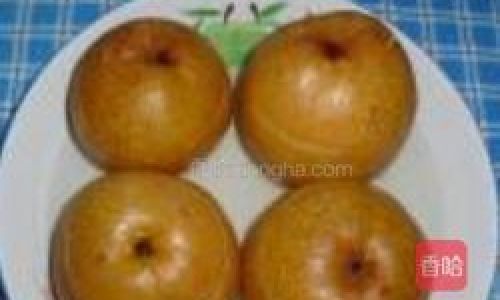
Ingredients and Their Roles
Creating an authentic Sichuan Fritillaria pear stew requires careful selection of ingredients, each chosen for its unique contribution to flavor and health. Here’s a breakdown of the key components:
-
Pears (Ya Pear or Snow Pear):
The star ingredient, pears are chosen for their natural juiciness and cooling properties. In TCM, pears are believed to moisten the lungs, clear heat, and alleviate thirst. Ya pears, with their tender flesh and mild sweetness, are traditional favorites, though Asian pears or Bosc pears can serve as substitutes.
-
Sichuan Fritillaria Bulbs (Fritillaria cirrhosa):
- These small, beige bulbs are the medicinal heart of the dish. They contain alkaloids like peimine and peiminine, which have anti-inflammatory and expectorant effects. When cooked, they impart a subtle bitterness that balances the pear’s sweetness.
-
Rock Sugar (Bing Tang):

A type of unrefined cane sugar, rock sugar is preferred over refined white sugar for its purported ability to enhance the dish’s therapeutic qualities. It adds sweetness without overpowering the delicate flavors and is believed to soothe the throat.
-
Water:
Used for steaming, water helps meld the ingredients into a cohesive, aromatic broth.
Optional Enhancements:
- Dried Jujubes (Hong Zao): Adds sweetness and additional TCM benefits like nourishing the blood.
- Goji Berries (Gou Qi Zi): Boosts the dish’s antioxidant content and visual appeal.
- Honey: A vegan alternative to rock sugar, offering antibacterial properties.
Step-by-Step Preparation Guide

Preparing the Sichuan Fritillaria Bulbs
- Begin by gently crushing the Fritillaria bulbs using a mortar and pestle or the back of a spoon. This process releases their medicinal oils and ensures their properties infuse the stew thoroughly. Aim for a coarse powder rather than a fine dust to retain texture.
Preparing the Pear
- Select a firm, ripe pear. Wash it thoroughly under cool water to remove any wax or residue.
- Using a sharp knife, slice off the top quarter of the pear to create a “lid.” Scoop out the core and seeds carefully, leaving the flesh intact. For an aesthetic touch, some cooks carve decorative patterns into the pear’s skin, though this is optional.
Assembling the Stew
- Place the hollowed pear in a heatproof bowl or ceramic ramekin.
- Sprinkle 1–2 teaspoons of crushed Fritillaria powder into the pear’s cavity, depending on desired potency.
- Add 1–2 pieces of rock sugar (adjust to taste) and, if using, a few dried jujubes or goji berries.
- Replace the pear’s “lid” and pour ½ cup of water into the bowl to prevent burning during steaming.
Steaming Process
- Bring a pot of water to a rolling boil. Place the bowl containing the pear inside a steamer basket or directly into the pot, ensuring the water level does not touch the bowl.
- Cover the pot and steam on medium-low heat for 45–60 minutes. The pear should soften significantly, and the broth should develop a golden hue.
Serving and Storage
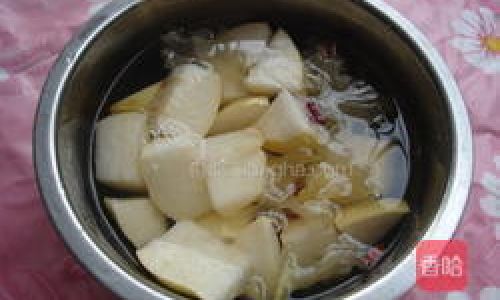
- Carefully remove the bowl from the steamer. Allow the stew to cool slightly before serving.
- Consume the pear, broth, and solids while warm for maximum therapeutic effect.
- Leftovers can be refrigerated in an airtight container for up to 3 days. Reheat gently before serving.
Tips for Perfecting Your Stew
- Pear Selection: Opt for pears with smooth, unblemished skin. Overripe pears may collapse during steaming.
- Sweetness Adjustment: Taste the broth before serving and add honey or additional rock sugar if needed.
- Cooking Time: Oversteaming can render the pear mushy. Check for tenderness by piercing the flesh with a fork after 45 minutes.
- Safety Note: While Sichuan Fritillaria is generally safe, pregnant individuals or those with pre-existing conditions should consult a healthcare provider before consumption.
Health Benefits and Scientific Insights
Modern research increasingly validates the traditional uses of Sichuan Fritillaria pear stew. Studies suggest that Fritillaria cirrhosa contains compounds that inhibit cough reflexes and reduce inflammation in the respiratory tract. Pears, rich in dietary fiber and antioxidants, support immune function and hydration. Together, they create a potent remedy for:
- Dry Coughs: The stew’s moistening properties soothe irritated throats and reduce phlegm viscosity.
- Sore Throat Relief: The combination of pear’s cooling effect and Fritillaria’s anti-inflammatory action provides rapid relief.
- Immune Support: Antioxidants in pears and jujubes combat oxidative stress, aiding recovery.
Variations and Modern Adaptations
While the classic recipe remains timeless, contemporary cooks often experiment with variations:
- Slow Cooker Method: For busy households, assemble the ingredients in a slow cooker and simmer on low heat for 3–4 hours.
- Vegan Alternatives: Substitute rock sugar with maple syrup or agave nectar.
- Spiced Twist: Add a cinnamon stick or star anise during steaming for a warming flavor profile.
Cultural Context and Modern Relevance
In an era dominated by over-the-counter medications, Sichuan Fritillaria pear stew endures as a testament to the power of holistic healing. Its resurgence in popularity among health-conscious millennials and TCM enthusiasts underscores a broader shift toward natural remedies. Social media platforms like Instagram and TikTok feature countless tutorials and testimonials, with users praising its efficacy and nostalgic appeal.
Conclusion
Sichuan Fritillaria pear stew is more than a dish—it’s a legacy. From the misty mountains of Sichuan to modern kitchens worldwide, this recipe embodies the intersection of tradition and innovation, health and flavor. Whether you’re seeking relief from a persistent cough or a taste of cultural heritage, this stew offers a humble yet profound connection to the wisdom of generations past. As you savor each spoonful, remember that you’re not just eating; you’re participating in a ritual of healing that has endured for millennia.
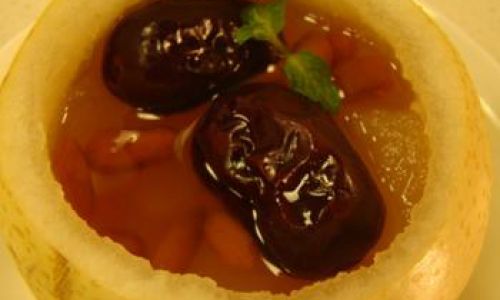
Key Takeaways
- Sichuan Fritillaria pear stew is a TCM classic blending herbal medicine with culinary artistry.
- Its ingredients—pears, Fritillaria bulbs, and rock sugar—work synergistically to soothe respiratory ailments.
- With minimal effort, anyone can recreate this timeless remedy, bridging ancient wisdom and modern wellness.
So, the next time a cough lingers or autumn’s chill settles in, let this stew be your guide to comfort and wellness. Your body—and your taste buds—will thank you.
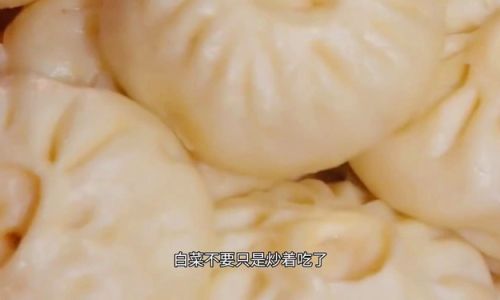
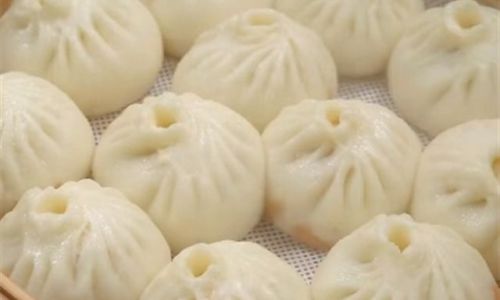
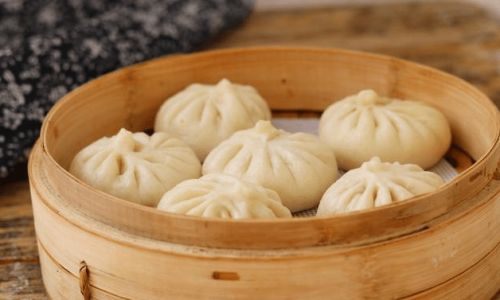
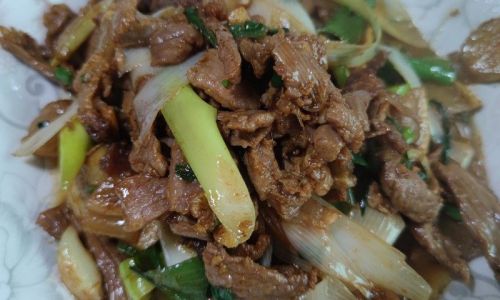

0 comments